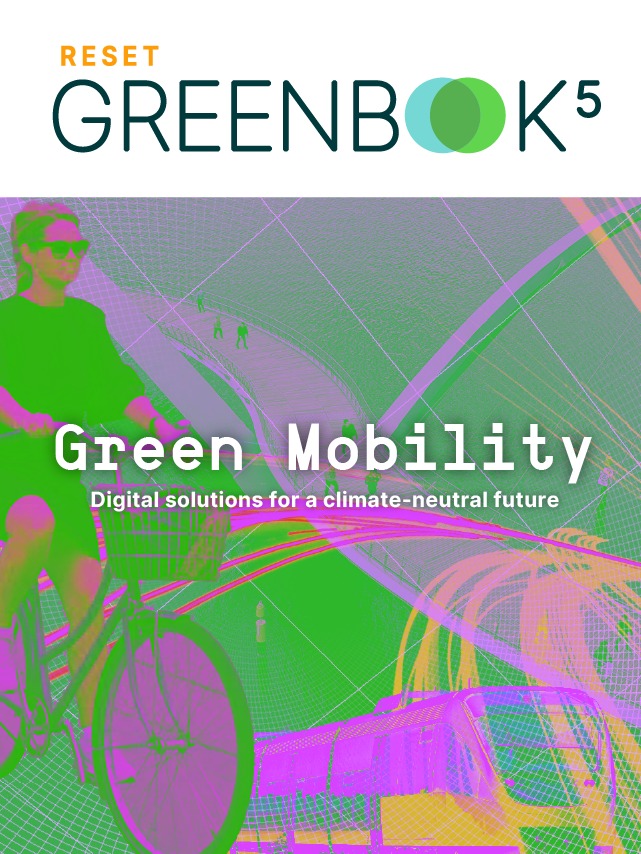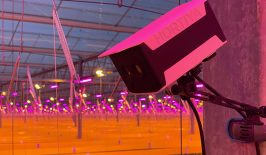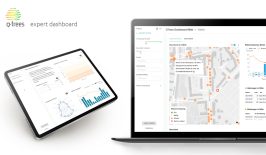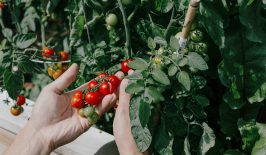When we think of sustainable, tech-enabled mobility of the future, truck transport isn’t the first image that comes to mind. But, currently, most countries are still highly reliant on trucks to transport goods from A to B. In the European Union, a staggering 76.5 percent of all inland freight was moved via roads in 2018, according to Statista. In recent years, this number has only increased, while rail transportation — a far more sustainable option — has declined.
Countries such as Switzerland are showing how it can be done by carrying out freight transportation predominantly by rail. But in countries like Germany, where only a fraction of companies are connected to the rail network, only about 19 percent of goods are currently transported by rail. And, until the European railway network develops the capacity to take care of most of its transport needs, trucks will continue to carry a large portion of freight.
And, freight doesn’t seem to be disappearing any time soon. E-commerce is booming and putting a straining existing road and railway transport routes. Simultaneously, many countries are facing a shortage of qualified truck drivers due to the increasingly difficult conditions of this already demanding job; the pandemic forcing people to switch jobs and new job opportunities due to digitalization.
This affects the cost of truck shipping, driving up prices which are only impounded by rising fuel costs. And, the true cost doesn’t stop there. Trucks are particularly unsustainable even in comparison with other modes of transport: rail transport is typically four times more efficient in terms of fuel consumption compared to trucks and emits 75 percent fewer greenhouse gas emissions.
Could battery-electric trucks be a solution?
A study investigating different models of heavy-duty vehicles and fuels in the European market showed that battery-electric trucks drastically outperform every other model. Compared to best-in-class diesel models, natural gas, and hydrogen fuel cell electric alternatives they produce at least 63 percent fewer emissions. That figure can rise to 92 percent when completely running on renewable electricity.
But as clear a picture as these numbers paint, European rail currently simply isn’t up to speed on providing the infrastructure or access for companies to choose the railway for their transport.
What Can Be Done Now?
This begs the question: so how do we start to move freight towards sustainable alternatives? What can we do now, and how can we utilize present-day technology to improve the efficiency of trucks in terms of fuel consumption?
There are a few projects tackling these questions and trying to innovate truck transport.
The “FvfT” project has developed artificial intelligence (AI) to predict fuel consumption for individual journeys, aiming to optimize it and reduce associated emissions. To achieve accurate predictions, the AI identifies the variable factors that impact fuel consumption, such as speed and acceleration before making its calculation.
Not only does a more efficient operation of trucks provide economic advantages for logistics companies, but it also minimizes unnecessary use of resources and energy. Previously, fuel consumption forecasts were based solely on average figures, making it impossible to forecast consumption for individual trucks, routes, or specific days. However, now individual predictions of fuel consumption for future truck journeys are possible, using traffic volume data to anticipate speeds and driving behaviour.
Green Mobility – Digital solutions for a climate-neutral future
Autonomous vehicles, e-mobility, AI-controlled traffic planning, new modes for moving from A to B — what will the mobility of tomorrow look like?
We present the digital solutions being proposed for climate-neutral transport and logistics and discuss the new challenges of “digital mobility” in this dedicated special feature.
With this development, several scenarios can now be simulated. These include efficiency-based dispatching, green routing, pricing, and an online tool that calculates fuel consumption forecasts for individual journeys on the website forecast.tracks.eco. Moving forward, these new product features will be further developed and integrated into the existing product portfolio for transport companies.
Another similar service is the forecasting platform “Tracks”. Companies can use their tool to calculate fuel consumption and CO² emissions and get more accurate predictions for their shipments.
With their fuel and CO² Calculator project, they aim to showcase the significant impact that real data processing can have on a company’s bottom line. Their calculation tool enables simulations of efficiency-based dispatching, greener routing and cheaper pricing.
“Truck-Connect” focuses on improving e-mobility transport. Their premis is that the adoption of e-trucks presents significant hurdles for energy and transportation companies and dispatching e-trucks has become more complex. In addition, the integration of various sectors including energy and industrial has increased demand on the electrical power. For instance, charging processes can overburden the grid, meaning the power supply may need to be stabilized.
Their project aims to build a platform that facilitates the exchange of energy and traffic data, establishing new connections between logistics providers, charging stations and network operators. Data is then analyzed to enable more dependable and sustainable transportation.
How Digital Tools Can Drive Change
As these projects show, there are four primary benefits of implementing digital tools in the transport sector.
Firstly, they aim for increased transparency of resource consumption. Smart, data-driven systems can monitor truck fleets and provide real-time feedback on fuel and energy consumption, as well as carbon emissions. This will allow companies to assess the environmental impact of their transport operations and make decisions about how to reduce their carbon footprint.
Secondly, the most efficient routes for a truck fleet can be planned. Taking into account factors such as traffic, road conditions and weather can help to reduce time spent on the roads, reducing fuel consumption and carbon emissions.
Thirdly, the number of empty rides that trucks take can be reduced. By using data-driven systems to match cargo with available trucks, empty rides can be avoided. Fewer rides mean fewer trucks on the road, reducing the carbon footprint.
Finally, digital tools can assist a shift to e-mobility. AI-based systems can be used to monitor the performance of electric and hybrid trucks, allowing companies to assess how effective these vehicles are for their transportation needs. And, on a larger scale, they can help with infrastructure to make battery-electric trucks a viable option.
What Does That Mean for the Future?
What remains clear is that for a sustainable supply chain, truck-based transport isn’t the way to go. Even when switching to e-mobility, railway transport will always remain the more efficient choice compared to roads filled with individual heavy-duty vehicles.
But, our railway infrastructure still has a long way to go. And while that slowly changes, the smart use of technology can increase the transparency and effectiveness of our current supply chain. By seeing what is and isn’t working in the current system, we can hopefully avoid making the same mistakes twice.











